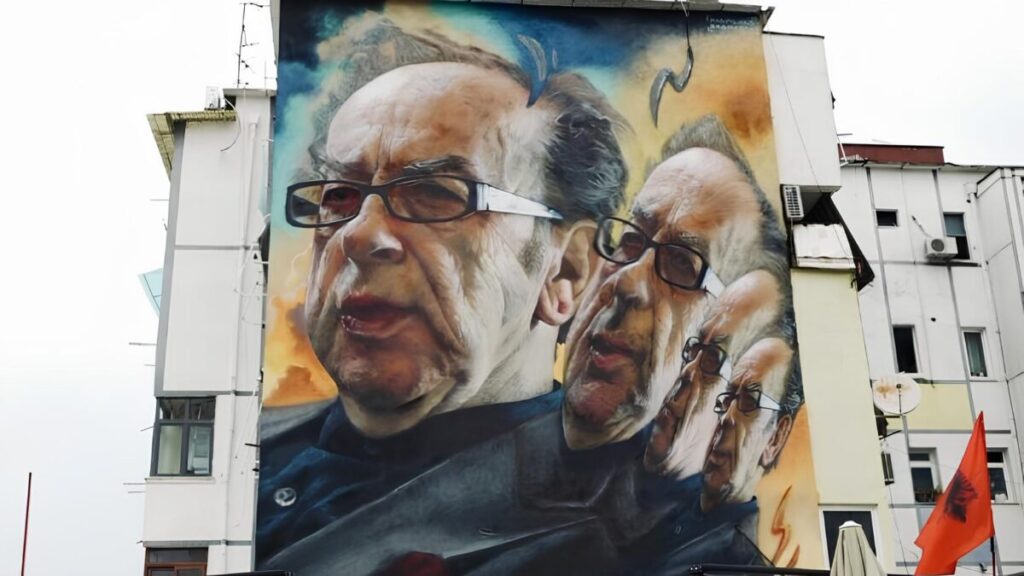Tirana lives to the rhythm of a continuous transformation. Transitioning from communist grayness to architectural anarchy, the Albanian capital strives to create urban unity with varying degrees of success. For Helidon Haliti, one of the country's most prominent artists, art must be an integral part of this development by signing the city's identity in public spaces.
Tirana is an extraordinarily dynamic city. The bars and restaurants, the lively streets, and the new urban spaces make it an attractive destination. However, beyond this showcase, art seems to remain in the background. Painter Helidon Haliti, one of the most critical and constructive voices in Albania, believes that Tirana lacks a coherent strategy to highlight or promote visual arts.
Analyzing recent developments, he proposes concrete solutions, reflecting on what could be done to restore art to public life. "The architectural chaos and the absence of a unified artistic approach have left their mark on the city," he says, emphasizing the importance of initiatives like Mural Fest, to bring more color and life to Tirana.
From urban chaos…
Before the 1990s, Tirana was a city with a rigid architectural structure, closely controlled by the regime. Spaces dedicated to art were rare, mainly confined to state institutions, such as museums and public buildings. Moreover, exhibitions, like artistic expression, were subject to strict supervision. However, the city benefited from architectural stability, albeit cold and limited in creativity.
With the advent of democracy in 1991, changes were immediate but often uncontrolled. "From then on, urban chaos took control of Tirana. Architecture developed spontaneously, without a clear artistic vision. People began to build according to their desires, shaping a city without a well-defined identity," Haliti explains.
One of the main problems, according to him, was the lack of a clear cultural policy. "Instead of transforming into a vibrant artistic capital, Tirana filled up with concrete. Gray colors covered the facades, and the city became more of an overcrowded space than a place of artistic inspiration," he continues.
…to the Street Art Festival
One of the most significant efforts to bring art into public space has been the creation of Mural Fest. This festival, organized by the Municipality of Tirana, aims to transform the city's walls into monumental works of art. This event, which brings together local and international artists, adds dynamism and color to urban spaces.
For Haliti, this initiative has certainly dotted the city with points of color, but he warns against the risk of opening the festival to unrecognized artists, who may lack professionalism. "Projects like this require expertise and experience to be executed correctly, as I know what it means to paint walls without having the right standards. Although Mural Fest brings energy and freshness, it is not enough to create a sustainable artistic ecosystem," he states. He also emphasizes that the absence of a clear selection process and professional oversight risks compromising the quality and longevity of these works.
And he adds: "In Tirana, many artistic activities take place outdoors, but most of them belong to music, noise, and celebrations. The capital suffocates us all. Visual arts suffer the most. The city is overwhelmed by banal advertisements and bright lights, like any other metropolis."
Beyond murals
For Haliti, street art must go beyond simple murals to integrate into the very architecture of the city, with new spaces available for artists. To become a part of the daily life of citizens. He therefore proposes the creation of a clear strategy to integrate art into public life, namely a cooperation between the Municipality and the artistic community to develop a legal framework that supports art in urban spaces. He also emphasizes the need to provide financial support to create monumental works using durable materials like bronze and marble.
He also suggests dedicating spaces to artists, such as public studios and galleries, where regular exhibitions can be organized. In his view, however, there remains a crucial step: the creation of a specific area of the city where artists could display their works, where citizens and visitors could gather around art. His discourse is beginning to resonate. In addition to institutional support for visual arts, the Municipality of Tirana has indeed invested in infrastructure and is establishing funding for projects in public space, through its own funds and partnerships with international organizations.

Cover Photo: Created for Mural Fest 2021, this work by Greek artist Gera was ranked among the 100 best images in the world © DR
